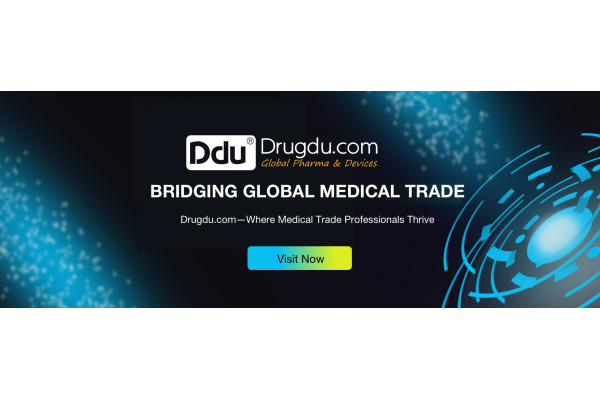【EXPERT Q&A】Under the background of volume-based procurement, how to select high cost-performance generic drug research and development varieties?
July 28, 2025
Source: drugdu
 254
254
Drugdu.com expert's response:
In the context of volume-based procurement, selecting high-cost-effectiveness generic drug R&D targets requires a comprehensive evaluation across five dimensions: market potential, competitive landscape, technical feasibility, policy orientation, and corporate resources. Priority should be given to品种 (products) that have passed consistency evaluations, address rigid clinical needs, possess moderate technical barriers, and are supported by policies. Below are detailed strategies and analyses:
I. Market Potential: Focus on High-Sales, High-Profit, High-Growth Areas
Absolute Sales Data
Prioritize large-scale products with annual sales exceeding RMB 1 billion, such as antihypertensive drug amlodipine and antidiabetic drug metformin. Even with a 50% price reduction post-procurement, these products can maintain profitability through increased sales volume.
Case Study: In the "4+7" volume-based procurement, Beijing Jialin Pharmaceutical won the bid for atorvastatin calcium at RMB 6.6 per box, achieving a gross margin exceeding 100%. With procurement across just 11 cities, projected profits reached RMB 100 million, with even greater potential upon nationwide expansion.
Sales Trends
Target chronic disease, oncology, and anti-infective therapies with long-term usage patterns, avoiding short-term treatments or products with numerous substitutes.
Data: Hypertension and diabetes medications account for over 60% of the generic drug market, with stable market share post-procurement due to high patient compliance.
Relative Sales Data
Compare market shares of competing products to identify less crowded segments.
Strategy: Avoid products where originator drugs hold >70% market share (e.g., Pfizer’s Lipitor) and prioritize those with originator shares <50% (e.g., acarbose).
II. Competitive Landscape: Avoid "Red Oceans," Capture "Blue Oceans"
Consistency Evaluation Progress
Prioritize products that have passed consistency evaluations or originator drugs nearing patent expiration. Avoid unapproved products, which face procurement bans.
Policy: China’s NMPA mandates that unapproved generics cannot participate in volume-based procurement, with 20 provinces already suspending such products.
Corporate Competitive Strategies
Large Enterprises: Diversify across categories and leverage economies of scale (e.g., Huahai Pharmaceutical with 10 approved consistency evaluation products).
Mid-Sized Enterprises: Focus on niche areas (e.g., oncology, cardiovascular) and develop sophisticated products (e.g., complex formulations by Luye Pharma).
Small Enterprises: Transition to API supply or contract manufacturing to avoid direct competition (e.g., providing intermediates for large firms).
Patent Barriers
Avoidance Tactics: Circumvent patents by modifying reaction conditions, excipient ratios, or dosage forms (e.g., Shihuida’s levamlodipine).
Innovation Opportunities: Target originator drugs with patents expiring in 1–3 years for early R&D and filing (e.g., oncology drugs expiring in 2025).
III. Technical Feasibility: Balance R&D Costs and Success Rates
Traditional Generics
Prioritize products with mature technologies and simple processes (e.g., tablets, capsules) to reduce R&D risks.
Case Study: Amlodipine besylate tablets rapidly entered the market post-consistency approval, capturing market share.
Complex Generics
Invest in high-barrier products (e.g., sustained-release formulations, inhalers) to build long-term竞争优势 (competitive advantages).
Policy Support: China encourages complex formulation R&D, offering priority review for approved products.
Case Study: Diclofenac sodium topical gel used PBPK modeling to waive postprandial bioequivalence studies, shortening development timelines.
New Evaluation Methods
Adopt PBPK modeling, in vitro trials, and other alternatives to traditional bioequivalence tests to cut costs.
Applications: BE waivers for low-dose products, food effect assessments, and local delivery equivalence studies.
Policy Orientation: Align with National Healthcare and Procurement Rules
IV. Volume-Based Procurement Catalogs
Prioritize products included in national or provincial procurement lists to secure post-bid market share.
Data: The second batch covered 33 products in diabetes, hypertension, and other fields, with selected drugs accounting for 78% of procurement volume.
Medicare Payment Standards
Monitor linkage between payment prices and bid prices to prevent price inversions.
Policy: Non-selected drugs face payment caps no higher than bid prices, forcing price cuts or market exits.
International Certifications
Pursue FDA/EMA approvals to expand into global markets (e.g., Kelun Pharma’s ceftriaxone sodium).
Advantage: International certifications enhance product quality recognition and strengthen procurement competitiveness.
Corporate Resources: Align with Strengths and Strategic Positioning
V. Large Enterprises
Diversify across categories and reduce costs through vertical integration (R&D + production + sales).
Case Study: Hengrui Medicine uses "generic drug cash flow" to fund innovative drug R&D.
Mid-Sized Enterprises
Focus on niche areas and enhance profitability through sophisticated development (e.g., oncology drugs).
Strategy: Integrate resources, diversify production lines, and strengthen R&D capabilities.
Small Enterprises
Shift to API supply or contract manufacturing to partner with larger firms.
Case Study: Yantai Luyin Pharmaceutical supplies intermediates to large enterprises, avoiding direct competition.

Read more on
- 【EXPERT Q&A】What are the requirements for quality management in medical device production? January 7, 2026
- 【EXPERT Q&A】What are the requirements for the production of Class I medical devices? January 5, 2026
- 【EXPERT Q&A】What qualifications does a medical device company need to obtain? January 2, 2026
- 【EXPERT Q&A】What Do Class I, II, and III Medical Devices Specifically Refer to in the Classification of Medical Devices? What Are the Classification Bases? December 31, 2025
- 【EXPERT Q&A】What are the main testing standards for medical devices? December 29, 2025
your submission has already been received.
OK
Subscribe
Please enter a valid Email address!
Submit
The most relevant industry news & insight will be sent to you every two weeks.



